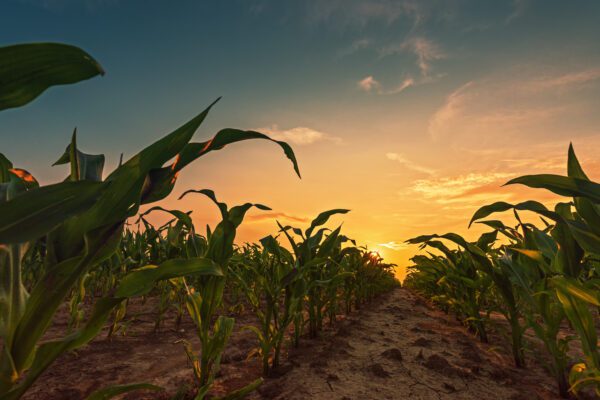
Feeding a changing climate
Navigating climate risks in agriculture and global supply chains requires expertise, strategy, and actionable insights.
How Is Climate Change Disrupting Global Crop Production?
Climate change is reshaping the global food system. Rising temperatures, shifting rainfall patterns, and more frequent extreme weather events are influencing how and where food can be grown.
Agriculture is sensitive to climate conditions, so even small shifts in temperature or seasonal rainfall can significantly affect crop growth, yields, and the stability of food supplies. Wheat and soybean, two of the world’s most important staple and feed crops, are particularly affected.
Together, they underpin bread, livestock feed, processed foods, and global trade flows that connect farmers and consumers across continents. As the climate continues to warm, understanding the risks and designing strategies to manage them will be critical for maintaining food security.
Crop modelling and field-based studies indicate that as global temperatures rise, yields of wheat and soy face increasing pressure. Wheat is especially sensitive to high temperatures during its flowering and grain-filling stages. Even short heatwaves can reduce grain size and overall harvest volume. Soybeans, meanwhile, respond strongly to combined heat and moisture stress. Drought affects the plant’s ability to convert sunlight into energy, while excessive heat reduces pod formation.
How Much Could Global Yields Decline Without Adaptation?
Long-term projections suggest that under continued warming, many major producing regions may experience lower yields. Meta-analyses indicate that even with adaptation, global wheat yields could decline by around 10–15% and soybean yields by 20–25% under moderate warming scenarios (Rosenzweig et al., 2014; Zhao et al., 2017; Müller et al., 2021; IPCC AR6).
These figures vary by location: higher-latitude regions may see temporary yield gains as growing seasons lengthen, while tropical and subtropical regions, where many emerging economies are located, face the greatest risks.
Beyond gradual climate shifts, extreme weather events are becoming more frequent and severe. Floods can wipe out crops in a matter of hours, destroy stored grain, and disrupt transportation networks needed to move food to market. Rising temperatures also accelerate pest and disease spread, compounding losses.
How Does Climate Volatility Affect Farmers and Consumers?
These climate shocks have two major economic consequences. First, they reduce supply. When harvests fall, the amount of wheat or soy available for export decreases, pushing global commodity prices higher. Second, they create volatility. Unpredictable weather leads to unpredictable yields, making it harder for farmers, traders, and governments to plan.
This volatility affects consumers most directly, particularly in countries that import a large share of their food. When global prices rise, households spend a greater portion of their income on basic staples, increasing the risk of food insecurity.
Farmers also face heightened financial pressure. Lower yields mean lower revenue, which in turn affects their ability to repay loans or reinvest in their farms. For smallholders in emerging economies, who often have limited savings and weak access to credit, even one bad season can have long-lasting consequences.
What Is Climate-Smart Agriculture and How Does It Help?
Despite the scale of the challenge, there are proven strategies that can help stabilise yields and reduce risk. Climate-smart agriculture (CSA) focuses on improving productivity while building resilience. This includes using drought-tolerant seed varieties, improving soil management, adopting conservation tillage, and investing in efficient irrigation systems. When combined with farmer training and access to finance, CSA practices have been shown to reduce yield losses during heat and drought events.
Risk-sharing financial tools, such as weather-indexed insurance and disaster-response funds, help smooth income shocks, allowing farmers to recover more quickly. Public investment in infrastructure such as drainage systems, flood barriers, rural roads, and storage facilities can reduce losses during extreme weather events and ensure markets continue to function.
At a broader scale, resilient supply chains are critical. Diversifying sourcing regions, maintaining strategic grain reserves, improving storage to reduce post-harvest losses, and investing in early-warning climate systems all help stabilise markets and protect businesses and consumers alike.
Building Resilient Supply Chains in a Warming World
Climate change is not a distant threat to food systems; it is already influencing yields, prices, and household food security in many regions. But the risks are manageable if governments, industry, and farmers act together.
Investing in climate-smart practices, resilient infrastructure, and adaptive supply chains can help ensure that wheat, soy, and other essential crops remain reliable sources of food and income in a warming world. The challenge is significant, but so is the opportunity to strengthen the resilience of global agriculture for decades to come.
Navigating climate risks in agriculture and global supply chains requires expertise, strategy, and actionable insights.
Inspired helps organisations measure, manage, and reduce their environmental impact across complex sourcing networks. From carbon accounting and ESG reporting to supply-chain due diligence and climate-risk analysis, we provide the tools and guidance needed to turn sustainability ambition into measurable action.
If you have any questions or would like to discuss how our experts could best support you, please contact our ESG consultants today.










